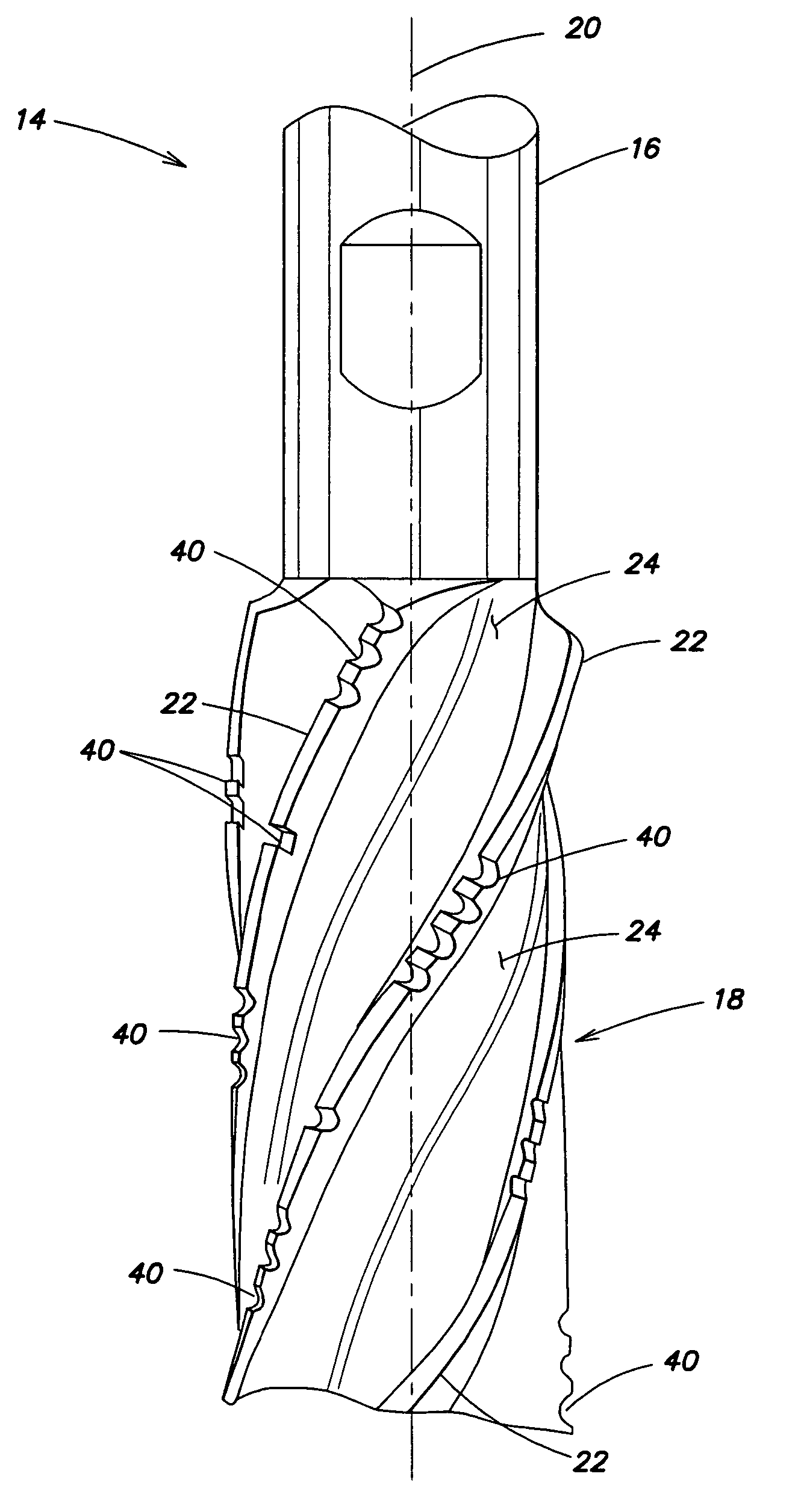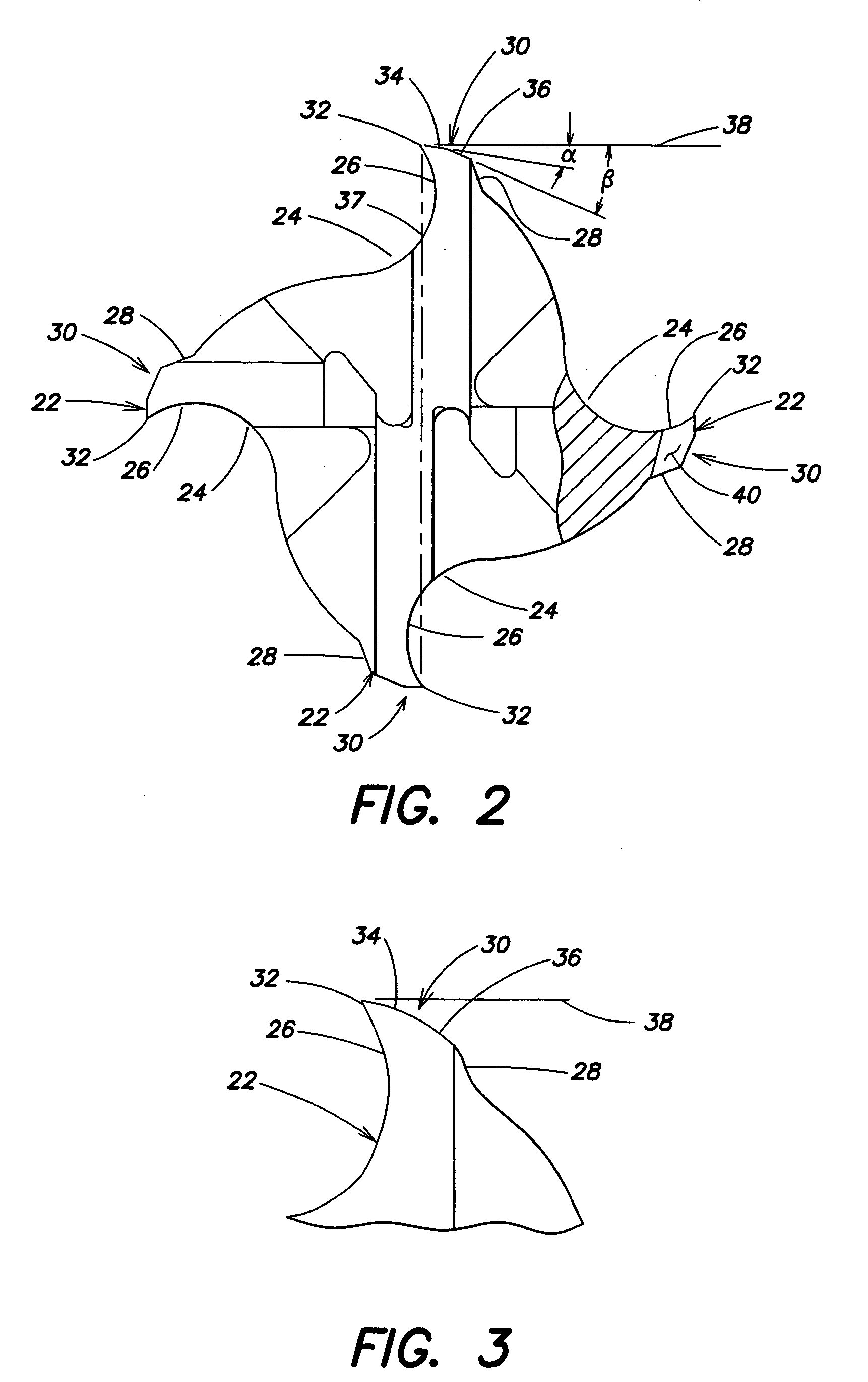Rotary cutting tool with non-uniform distribution of chip-breaking features
a rotary cutting tool and feature technology, applied in shaping cutters, manufacturing tools, wood boring tools, etc., can solve the problems of non-uniform distribution of chip-breaking features, tool not subject to significant uniform periodic forces, and material being machined at any given position is not subject to a uniform pattern, etc., to enhance the cutting performance of the rotary cutting tool, save valuable machining time, and reduce material consumption
- Summary
- Abstract
- Description
- Claims
- Application Information
AI Technical Summary
Benefits of technology
Problems solved by technology
Method used
Image
Examples
Embodiment Construction
[0033]Now referring to FIGS. 1-3, a rotary cutting tool 14 is provided that includes a shank portion 16, a cutting portion 18, and a longitudinal axis 20. The overall shape of the cutting portion 18 may be, but is not limited to, a cylindrical shape or a frustoconical shape (e.g., see FIG. 12). The cutting portion 18 includes a plurality of blades 22 separated by flutes 24 extending the length of the cutting portion 18. Each of the blades 22 has a leading face side 26, a trailing face side 28, and a land surface 30 bridging the leading face side 26 and trailing face side 28. The intersection between the leading face side 26 and the land surface 30 forms a cutting edge 32 for the respective blade 22. In some embodiments, the blades 22 and flutes 24 of the cutting portion 18 extend helically within the cutting portion 18, and in other embodiments, the blades 22 and flutes 24 are “straight flutes” that extend parallel to the longitudinal axis 20.
[0034]In some embodiments the land surfa...
PUM
| Property | Measurement | Unit |
|---|---|---|
| length | aaaaa | aaaaa |
| distance | aaaaa | aaaaa |
| constant radius | aaaaa | aaaaa |
Abstract
Description
Claims
Application Information
 Login to View More
Login to View More - R&D
- Intellectual Property
- Life Sciences
- Materials
- Tech Scout
- Unparalleled Data Quality
- Higher Quality Content
- 60% Fewer Hallucinations
Browse by: Latest US Patents, China's latest patents, Technical Efficacy Thesaurus, Application Domain, Technology Topic, Popular Technical Reports.
© 2025 PatSnap. All rights reserved.Legal|Privacy policy|Modern Slavery Act Transparency Statement|Sitemap|About US| Contact US: help@patsnap.com



